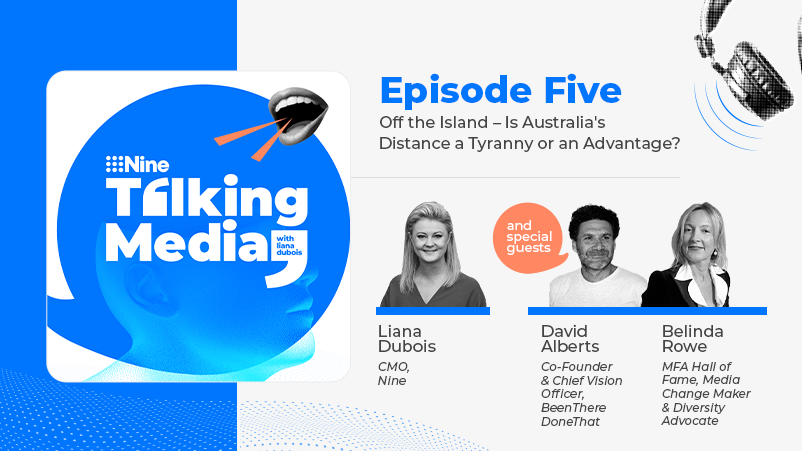MiQ boss: 20% swing to brand, video and pDOOH rise as programmatic performance, display fizzles; privacy overhaul precedes adtech shakeout; arbitrage suggestions rebutted

Eyes on the prize: MiQ co-founder and Global CEO, Gurman Hundal and APAC CEO Jason Scott see brand as programmatic's next frontier.
Programmatic pure-play MiQ says there's a major shift away from performance media buying and into brand underway – in dollar terms a circa 20 per cent swing over the last 12 months. That's a view informed by buying and data-enriching programmatic media across circa 2,500 advertisers in any given month via 700 agencies globally. Global boss Gurman Hundal and APAC CEO Jason Scott unpack programmatic's moving up the funnel, what's coming next, why Australia looks set for a shakeout – and why those crying arbitrage are stuck in the past.
What you need to know:
- MiQ sees 20 per cent swing underway from ad dollars allocated to performance and into brand across the circa $700m of programmatic media it buys and data-enriches for advertisers.
- Programmatic has to head upstream in order to keep growing, per APAC CEO Jason Scott. Right now it’s starting to flat line “for the first time ever” per global boss Gurman Hundal.
- Platform and privacy shifts are making cross-market buying harder, especially within video/TV as every major player becomes a walled garden.
- Australia’s privacy overhaul will likely lead to a supply chain shakeout and a shift to contextual 2.0.
- Perceptions of programmatic as easy money arbitrage are way wide of the mark, per Scott.
What you need to ask companies is how much of the ads you buy require an ID, which is either a cookie or an email address converted. If that percentage is high, those companies will struggle – even more so in Australia by the sound of it.
For the first time in more than a decade, digital ad revenue growth has flatlined – while programmatic revenues have swung circa 20 per cent towards brand channels and away from performance according to Gurman Hundal, co-founder and Global CEO of programmatic pure-play MiQ. He and MIQ APAC CEO Jason Scott think that shift will continue as BVOD and OOH take a greater share of programmatic budgets.
The firm, which buys media across the global market, has visibility over $700m of programmatic spend across all major DSPs and 2,500 advertisers in any given month via circa 700 agencies.
“This is the first time we’ve ever experienced it … the first time that digital ad revenue is not growing double digits every quarter from a year on year perspective,” said Hundal of last quarter, with the slowdown marked from September 2022. “In 20 years of working in digital advertising I’ve never seen any quarter on quarter drop, bar Q2 2020 because of the pandemic. Quarterly growth has never been below 10 per cent. You’re now down to under 5 per cent globally … we’re seeing it everywhere.”
Australia has declined more sharply.
Standalone digital spend via agencies – classified by SMI as all digital ad spend that doesn't go to websites or platforms that don’t have ties to traditional media – was -0.5 per cent in Q1 2023 versus Q1 2022. Even corrected for high Federal Government spending last year, growth stood at just 0.6 per cent. By contrast, in Q1 2022, SMI reported 19.2 per cent digital growth for the quarter.
Programmatic shift
While digital video growth is holding up, search and display are “off the boil”, per MiQ APAC chief, Jason Scott.
Hundal thinks that’s because marketers are moving away from “cost-per” performance metrics and campaigns. “We’re seeing that drop, the performance end of the market … and they are pushing performance elements upper funnel into brand – into out of home and TV.”
He suggests it’s as much to do with cookie addressability – now at “30-40 per cent” due to platform and browser changes – as a philosophical shift from advertisers, but the two are correlated.
“Running performance campaigns where they were tracking things through a Google campaign manager and it was a last click or last view attribution model, they're not as advantageous as they used to be,” said Hundal. “So basically we've seen our performance revenue drop and demand revenue drop I would say by 20 per cent.”
That reverse swing was playing out before ad budget belt tightening really hit home this year. “It’s been a trend for 12 months now,” per Hundal, fuelled simultaneously by improved measurability of brand advertising via programmatic channels.
“You can measure branding in a much more effective way, whether it's video completion rates, or in CTV doing incremental reach and frequency analysis, in a much greater way than you could [before],” said Hundal, citing the rise of automatic content recognition (ACR) technology as a key enabler. “That's what's really driven investment into programmatic. Before it was just performance marketing, but performance marketing was so reliant on cookies as an identifier to measure everything.”
Regardless of Google’s reluctance to kill third party cookies, the shift is already underway and with growth sputtering, the digital ad supply chain has an incentive to move faster. “If you look at the march of programmatic as a sector, it was never going to grow at the rate it has been if it stayed lower funnel,” said Scott.
Contextual returns
Advances in measurement and planning will keep driving programmatic's performance-to-brand swing, reckons Scott, even if Australia’s privacy overhaul forces the ad industry to ditch cookie alternatives and return to contextual targeting. Scott and Hundal think that outcome is almost inevitable, if the Attorney-General walks the talk on regulating use of persistent identifiers such as hashed email addresses.
Per proposals released in February, hashed email addresses will be classified as personal information and the paper indicates using them will be treated as 'high risk', because they can be re-identified. Companies using them for ad tracking and audience matching will also require consent from users to do so, a task described by some as “mission impossible” given the supply chains involved.
If Australia’s lawmakers go “full throttle” on that proposal, per Hundal, “then what we call the anonymous web, which is more the contextual-based advertising space, will become much more important. So I think that's big.”
He thinks it will likely lead to an adtech shakeout – with potentially far more losers than winners.
“For years we've been two thirds, now nearly three quarters, what we call anonymous targeting, not linked to an ID, like contextual, things like that. We see [Australia’s privacy proposals] as a positive for MiQ for sure. We want to be the winners in the anonymous web, because we've always had a fear of these sort of IDs, whether it's cookies or email linked to an ID, getting challenged,” said Hundal.
“What you need to ask companies is how much of the ads you buy require an ID, which is either a cookie or an email address converted. If that percentage is high, those companies will struggle – even more so in Australia by the sound of it.”
We are seeing a bigger rise in walled gardens, where the data, the platform and the inventory sit in one location. And I don’t see that changing. It’s only going to increase.
More gardens
The problem with both privacy and platform shifts is that everybody is becoming a walled garden: Gain consent, reduce supply chain risk; keep all the money. That patchwork is already making video harder to buy – at least the good stuff.
“You are seeing a lot more big players who have got their own inventory, their own data asset, saying, 'okay, if you want to buy this, I'm only going to let you buy it through one route’, which is their DSP – the data and the inventory all sits in the walled garden,” per Hundal, citing Roku in the US, and Netflix and YouTube as examples both globally and locally.
“If you want YouTube, you have to go through DV360; you want Netflix, you have to go through Xandr. You want to go through [TV maker and free TV provider] Vizio, you can only buy those ads and data through the Yahoo DSP,” added Hundal.
“And if you want to access the most amount of viewership data across the broadest set of content, you might have to run [your ads] in all DSPs, because not one DSP can access all the data and all the inventory. So that fragmentation is happening.”
Retailers pushing hard for ad dollars are taking a similar approach. “You want to leverage what people have bought on Walmart and leverage their data? That goes through The Trade Desk; Amazon through Amazon DSP; Target has its own. So we are seeing a bigger rise in walled gardens, where the data, the platform and the inventory sit in one location. And I don’t see that changing,” said Hundal. "It’s only going to increase."
That next wave of fragmentation is making life harder for advertisers – because it means they must strike relationships with pretty much every DSP to hit truly mass audiences. But that’s why MiQ is banking on growth for those that sit over the top and provide a managed service.
I may pay overs [for data] versus market rate because I know exactly what outcome I'm going to get. That's the game. I'm not interested in how cheap it is.
Arbitrage dismissal
While ‘managed services’ within programmatic were in the past also a euphemism for arbitrage – buying media and selling on for mark-ups that were hard to justify – Jason Scott flatly rejects any suggestion MiQ has played that game.
“That's a misguided view. Arbitrage, to my knowledge, is inflating costs with no value-add. It’s the dirty end of the field. That's not what we do. We are an out in the open managed service offering two basic models,” said Scott.
“There's a fixed-fee model where we charge for our services and data on top of what we would buy their media for. The second one is a more performance-based model, where we sell on a CPM and where in consultation with the client, the agency, whoever it is, we're set performance goals. If we can beat that goal, then we do start to make a margin on the campaign,” said Scott.
“But none of these models involve marking up media costs for what we buy the media for. They are about what services we bring. We don't buy media for a dollar and then say, ‘we're going to mark that up to a dollar 20 and flog it to client X’. That is what I would call arbitrage. That is not what we do.”
Pay, win
Scott also rejects sentiment from some quarters – usually publishers griping that they reap too few cents on the advertising dollar due to middlemen bloat – that there is ‘stretch’ in the margin for layering data into the buy and subsequent reporting.
Scott said MiQ partners with so many data providers, circa 165, because it can feed its “120 data scientists” within its Bangalore, India, data hub to crunch through log-level data faster than waiting for it to be cleansed and packaged by a third party.
“That’s raw data feed – think instant, think tonnage,” said Scott. “Then we deal with all that complexity through our own system. So instead of having to wait for a curated data set, we'll just take it raw from the logs and then we'll do all the heavy lifting to format it, make sense of it and put it in the right columns. But that gives us instant access and a really big read of the data,” he added.
“Yes, we may pay overs [over the odds] for that sort of access, but that is our cost. That is an MiQ decision to say we will back our tech and our engineers so that we can pay for that feed. And maybe it will give us an advantage over other traders out there – especially when you are talking about trading in a real time world.”
Scott suggested those pushing arbitrage narratives were living in the past.
Ten to fifteen years ago, he said, when “programmatic equals cheap, programmatic equals shit”, there were plenty of guilty parties.
Bad actors exist in all markets, he acknowledged. “But we're not in that world now. We're in the world where you've got big companies like ours, most of the agencies and increasingly publishers, investing heavily into bringing more data and smarts into our media decisions,” said Scott.
“I may pay overs [for data] versus market rate because I know exactly what outcome I'm going to get. That's the game. I'm not interested in how cheap it is.”



